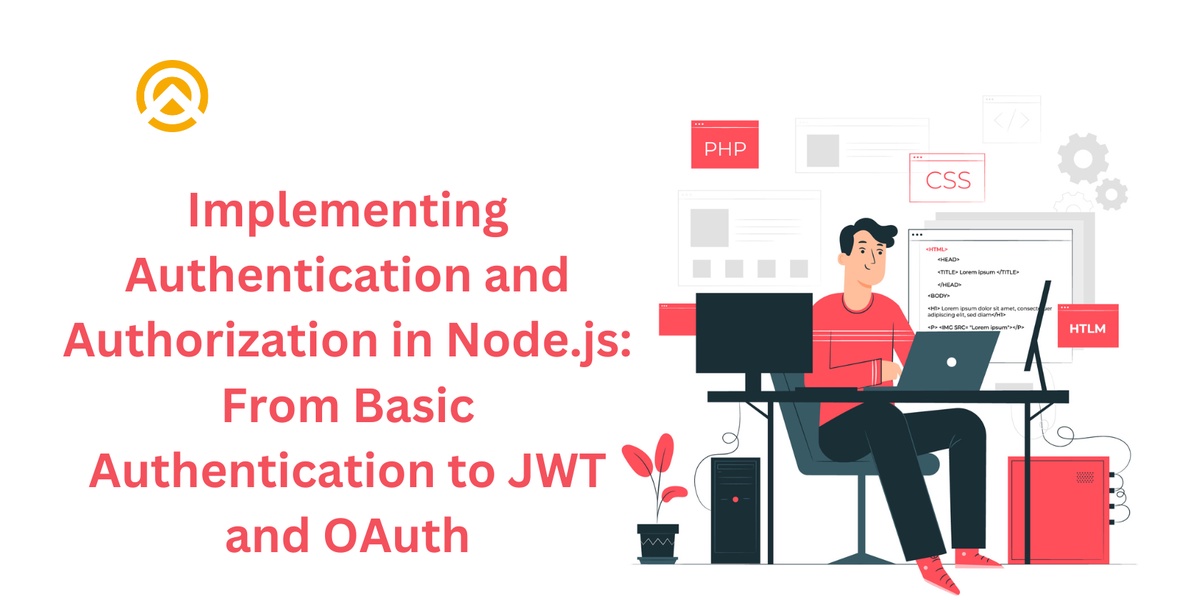Implementing authentication and authorization in a Node.js application involves setting up user authentication to verify user identities and authorization to control access to certain resources or functionalities.
According to Statista, Node.js incorporated 47.12% of votes by the developers for the most used Web frameworks. This survey was conducted in the year 2022 by Statista. So, you can also hire Node Js developers for turning your app idea into reality.
In this article, there will be a discussion about implementing authentication and authorization when you hire node js developers. This article will also incorporate a discussion about the cost factors involved to hire node.js developers.
What are the Steps to Implement Authentication and Authorization?
Here's an overview of the steps you can follow to implement authentication and authorization in a Node.js application:
- Choose an authentication strategy: There are various authentication strategies available, such as username/password, social login (OAuth), or token-based authentication (JWT). Select the strategy that best suits your application's needs.
- Set up user registration and login: This typically involves storing user credentials securely (e.g., hashed passwords) and verifying them during the login process.
- Use a session management library: For session-based authentication, consider using a library like express-session to manage user sessions. This allows you to track authenticated sessions and store session-related data securely.
- Implement middleware for authentication: Create middleware functions to authenticate incoming requests. This middleware can check for valid session tokens or verify JWT tokens, depending on your chosen authentication strategy. It ensures that protected routes can only be accessed by authenticated users.
- Set up user roles and permissions: Define user roles and their corresponding permissions. Determine which resources or functionalities each role can access. Store role and permission information in your user database or a separate storage mechanism.
- Implement authorization middleware: This authorization middleware should be placed before the route handlers to restrict access if the user lacks authorization.
- Protect routes and endpoints: Apply the authentication and authorization middleware to the relevant routes and endpoints in your application. This ensures that only authenticated and authorized users can access protected resources.
Which are the Available Authentications Models?
From Basic Authentication to JWT and OAuth, there has been a shift toward more secure and flexible authentication mechanisms in web applications. Here's an overview of the progression and benefits of these authentication methods:
- Basic Authentication: Basic Authentication is a simple authentication scheme where the client includes a username and password in the request headers. The server validates the credentials against a user database and grants access if they are correct.
- Token-based Authentication: The token contains encoded user information and is typically signed to prevent tampering. It allows the server to authenticate requests without the need for session storage.
- OAuth: OAuth introduces the concept of "authorization delegation." OAuth provides a secure and standardized way for users to grant controlled access to their resources.
- OAuth 2.0: OAuth 2.0 is the latest version of the OAuth protocol. It simplifies the authorization process and focuses on client developers' simplicity.
The transition from Basic Authentication to JWT and OAuth offers several benefits, including:
- Enhanced Security: Token-based authentication and OAuth improve security by eliminating the need to send credentials with every request. Tokens can be encrypted, signed, and validated to ensure authenticity and integrity.
- Scalability: Token-based authentication and OAuth are stateless, allowing for easier scalability and horizontal distribution of server resources.
How Much Does Node.js Development Cost?
The cost of Node.js development can vary significantly based on various factors such as project complexity, scope, features, team size, geographical location, and expertise required. Here are some key factors that can influence the cost of Node.js development:
- Project Scope and Complexity: The size and complexity of your project will impact the development cost. Larger and more complex projects generally require more time, effort, and resources, resulting in higher costs.
- Development Time: The time required to develop your Node.js application will directly impact the cost. Factors such as the number of features, integrations, and customizations will affect the development timeline.
- Development Team: The size and composition of the development team involved in your project can affect the cost. Hiring skilled developers, designers, QA engineers, and project managers will contribute to the overall expenses.
- Geographical Location: Development rates can vary based on the geographical location of the development team. Rates tend to be higher in regions with higher living costs and wages, such as North America or Western Europe, compared to regions like Eastern Europe, Asia, or Latin America.
- Experience and Expertise: The level of expertise and experience required for your project will impact the cost.
Hourly rates for Node.js development can range from $30 to $150 per hour, depending on the location and expertise of the development team.
Conclusion
When it comes to authentication models, the progression from Basic Authentication to JWT and OAuth has brought enhanced security and flexibility to web applications. Basic Authentication, while simple, has limitations compared to token-based authentication methods like JWT, which offer stateless and secure authentication. OAuth takes it a step further by allowing users to grant controlled access to their resources without sharing credentials with each service. OAuth 2.0 builds upon this, providing simplicity and different grant types for various application scenarios.
As for the cost of Node.js development, it can vary based on factors such as project scope and complexity, development time, team size and composition, geographical location, expertise required, and third-party integrations. Hourly rates for Node.js development typically range from $30 to $150, depending on the location and skill level of the development team.


No comments yet